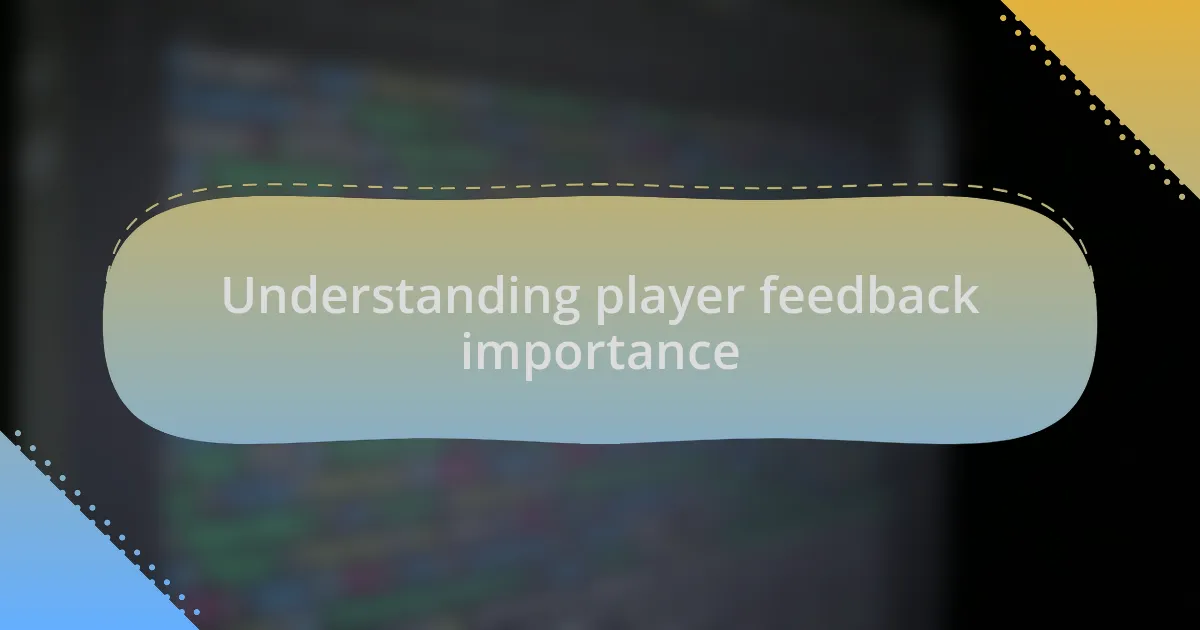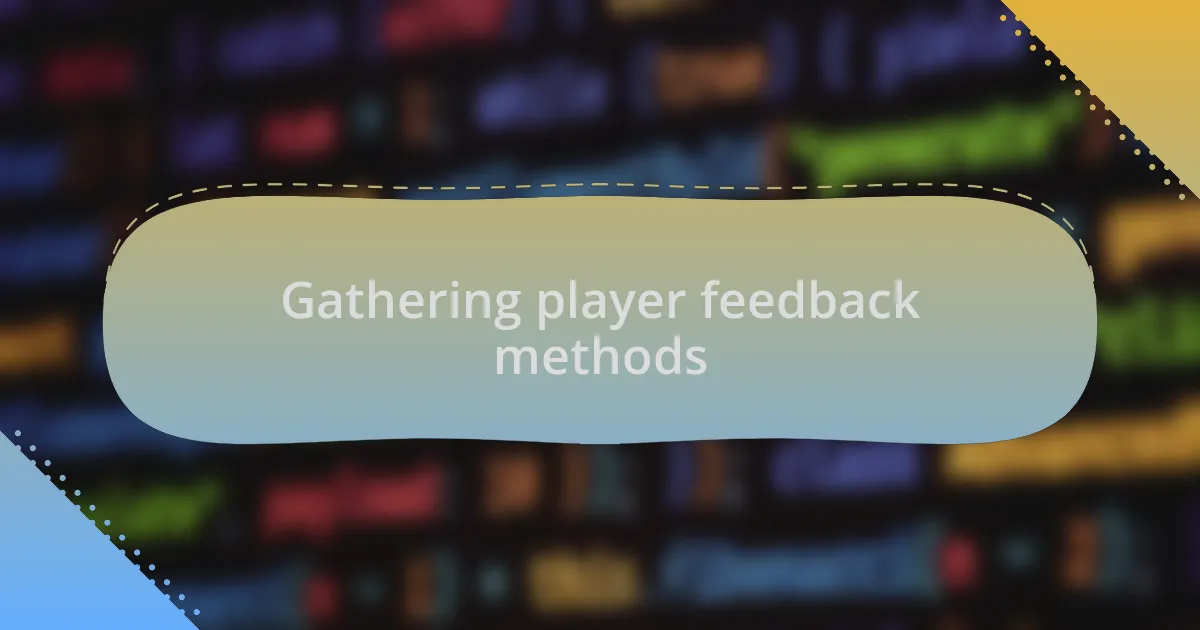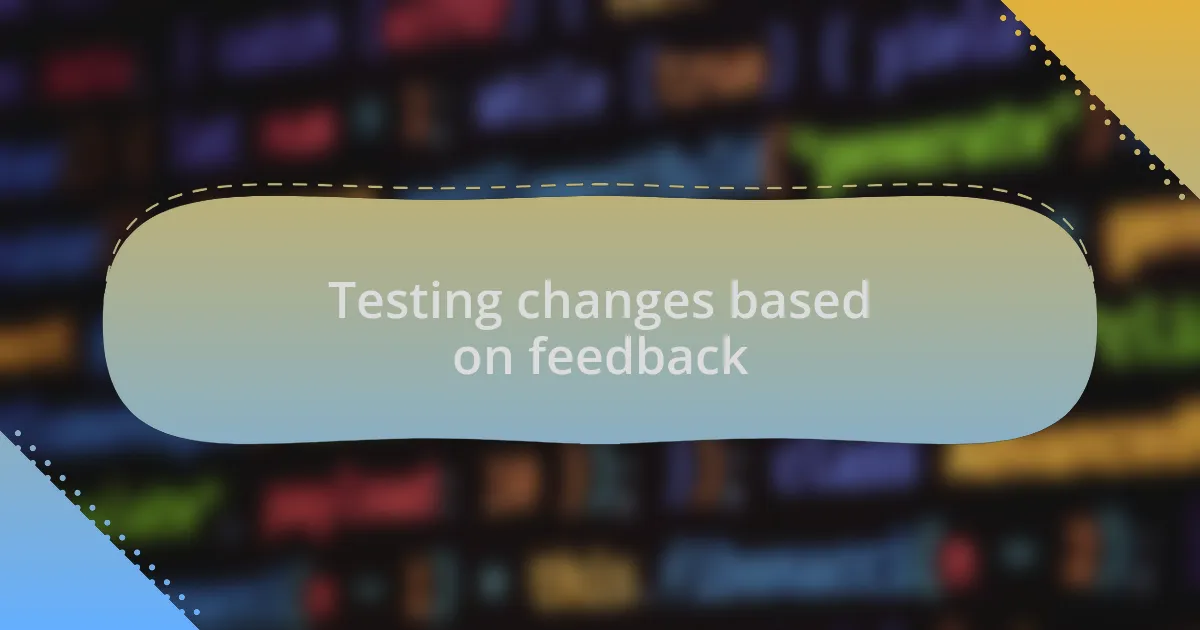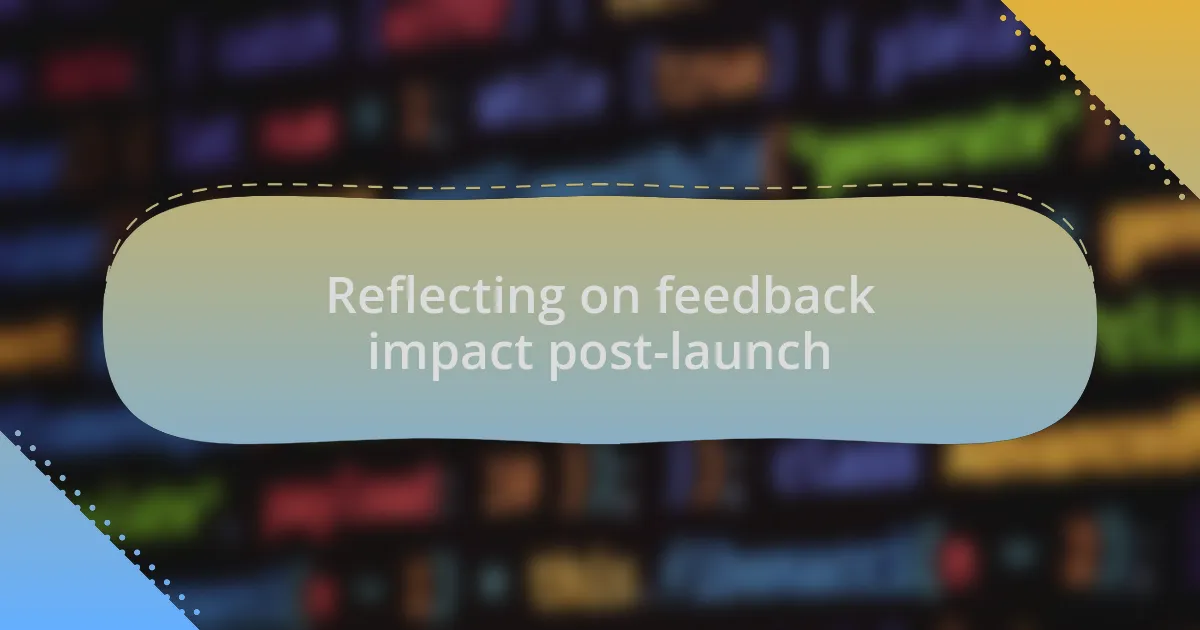Key takeaways:
- Player feedback is essential for enhancing game design and fostering a connection between developers and players.
- Effective methods for gathering feedback include surveys, community discussions, and live playtesting.
- Prioritizing feedback based on emotional resonance and the impact on user experience leads to more effective design changes.
- Continuous integration and reflection on feedback post-launch help improve future iterations and strengthen community ties.

Understanding player feedback importance
Understanding player feedback is crucial for creating engaging and successful games. I remember a project where I overlooked feedback in initial design phases, only to realize later how much valuable insight I lost. The players’ voices can reveal unexpected pain points and highlight features that resonate with them, which is essential for fine-tuning the player experience.
When I started incorporating player feedback into my designs, I was amazed by the depth of understanding it brought. One player shared their experience of feeling lost in a game due to unclear objectives. That single insight led me to revise my tutorials, making them more intuitive. Have you ever thought about how a small change based on feedback can transform a player’s experience? It’s incredible!
Reflecting on feedback also fosters a sense of community between developers and players. For instance, when I respond to feedback and implement changes, I can feel the excitement from players who appreciate being heard. This connection makes the game not just a product but a shared journey. Isn’t it rewarding to know that your work resonates with others?

Gathering player feedback methods
There are several effective methods for gathering player feedback, each with its own strengths. One approach I often use is conducting surveys after game sessions. I’ve found that players are often willing to share their thoughts when prompted in a simple, straightforward manner. I remember a survey I sent out following a beta test; the responses revealed trends I hadn’t considered, such as difficulty levels that players found frustrating. Have you ever noticed how a few targeted questions can lead to a treasure trove of insights?
Another method is to create forums or community discussions where players can voice their opinions freely. I once facilitated a discussion board for a game I was developing, and the engagement was phenomenal. Players shared not only their frustrations but also their triumphs and joys, which gave me a holistic view of their experiences. Isn’t it fascinating how sometimes players provide insights you’d never have conceived on your own?
Lastly, live playtesting sessions can be incredibly revealing. Watching players interact with a design while taking notes on their reactions has been invaluable for me. I recall one session where a seemingly trivial mechanic caused significant confusion. Observing their struggles opened my eyes to hidden challenges. Have you ever experienced that ‘aha!’ moment when you see something through a player’s eyes? It’s a reminder of how essential player feedback truly is.

Analyzing feedback for actionable insights
When analyzing feedback, I focus on identifying patterns that can drive meaningful changes. For instance, I once sifted through a pile of comments from players of a newly launched tutorial section. Many users expressed confusion over certain coding concepts, and while individual feedback varied, a clear trend emerged. Have you ever experienced the moment when disparate voices harmonize to reveal critical insights?
It’s crucial to categorize feedback effectively. I’ve found that creating themes, such as gameplay mechanics or user interface, can streamline the process. During one project, I encountered a flood of comments about visual clarity. By grouping these opinions, I was able to pinpoint specific design elements to refine, ensuring they aligned with user expectations. Isn’t it empowering to see how organized feedback can lead to concrete design improvements?
Taking action on feedback involves more than just recognition; it requires a willingness to iterate. I remember a time when I adjusted the difficulty of a tutorial based on player input. The change felt daunting, but the positive response from users was incredibly rewarding. Seeing players succeed where they previously struggled reinforced my belief in the power of responsive design. How often do we truly listen to our audience and let their experiences shape our work?

Prioritizing feedback for design changes
Prioritizing feedback is essential for making effective design changes. I’ve often found myself facing a flood of suggestions, but not all feedback carries the same weight. For example, I recall a project where players were vocal about navigation issues. By carefully assessing which comments came from frequent players versus casual ones, I could prioritize changes that would have the broadest impact on user experience. Isn’t it fascinating how understanding your audience can guide your decisions?
In my experience, urgency plays a big role in determining which feedback to act upon first. I once hesitated to address minor aesthetic concerns while major usability problems loomed. However, the more I reflected, the more I realized that minor changes could significantly boost user satisfaction. It’s like adjusting the lighting in a room; sometimes, it’s the subtle tweaks that create a more inviting atmosphere. Do you notice how small improvements can enhance overall comfort?
Emotional resonance also informs my prioritization process. I pay attention to feedback that evokes strong feelings, like frustration or joy. During an earlier tutorial, a player shared how a particular feature had made coding feel more accessible to them. That moment helped me recognize the importance of emotional engagement in design. Wouldn’t you agree that when users feel understood, they’re more inclined to embrace a platform?

Integrating feedback into design process
Integrating player feedback into the design process can be transformative. When I receive insights from users, I make it a point to categorize them into themes. For instance, during one project, I noticed multiple players commenting about the clarity of instructions. This feedback led me to overhaul our tutorial prompts, making them more concise and actionable. Have you ever considered how a few words can shift comprehension dramatically?
As I evaluate feedback, I actively involve players in the design process. I once organized a brainstorm session where players shared their experiences directly. This collaborative effort not only unearthed valuable ideas but also fostered a sense of community. It reminded me that design is not just about functionality; it’s about creating a shared experience. Isn’t it amazing how co-creation can amplify the impact of feedback?
Incorporating feedback is not a one-time task; it’s an ongoing journey. There have been moments when I implemented changes and received mixed reactions. Rather than feeling discouraged, I approached those comments as stepping stones for further iteration. Every piece of feedback offers an opportunity to refine and enhance the design. Don’t you think that ongoing engagement with users leads to richer, more fulfilling experiences?

Testing changes based on feedback
Testing the changes based on feedback is crucial to validate our design decisions. After revamping tutorial prompts, I ran a small user testing group to see how they’d respond to the new format. It was enlightening to observe their reactions firsthand; watching users navigate the updated prompts gave me deeper insight into what worked and what didn’t.
In one memorable session, I asked players to explain their thought processes as they interacted with the new features. Their candid remarks revealed surprising misconceptions I hadn’t anticipated. It made me realize how vital it is to not just observe but to listen actively. Have you ever found that what you think is clear can actually be confusing for others?
As I implemented revisions based on testing, I also set up A/B testing to compare the original and updated designs. I remember feeling a mix of excitement and anxiety as the data started rolling in. It was powerful to see the numbers reflect user preferences in real-time. This data-driven approach reinforced my belief that feedback isn’t just noise; it’s essential for crafting experiences that resonate with users.

Reflecting on feedback impact post-launch
Reflecting on feedback post-launch is a vital part of my design journey. I once found myself eagerly awaiting the initial user responses after a major update to our programming tutorials. It felt like opening the door to a room filled with potential, but also uncertainty. Did I truly meet their expectations? The answers lay in their reactions, which illuminated areas I hadn’t considered before.
As I dug into the feedback, I was struck by a blend of gratification and humility. One comment stood out: a user mentioned how a certain feature had changed their approach to coding challenges completely. That moment reminded me of why I love this work; the connection between creator and learner can be profound. But have you ever faced criticism that challenged your initial vision? I have, and while it stung, it ultimately inspired growth and resilience in the way I approach design.
Through follow-up discussions with users, I began to see patterns in their feedback that informed my future iterations. I recall one passionate supporter who provided detailed suggestions while expressing how she’d felt lost before the redesign. It was invigorating to engage in dialogue and embrace the constructive nature of her feedback. I realized then that reflecting on feedback not only enhances the product but also fosters a stronger community.